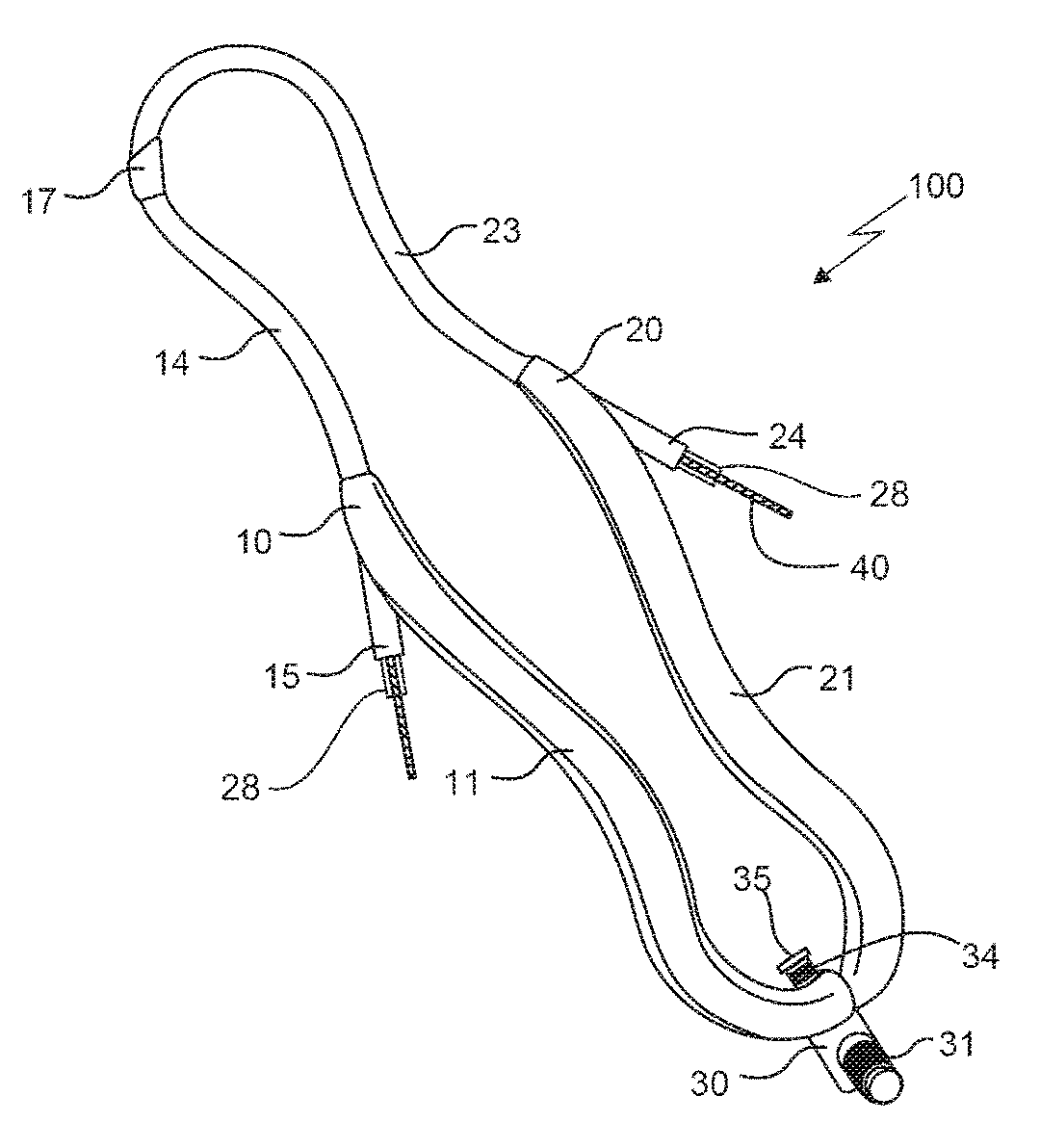Minimally invasive device for surgical operations
a minimally invasive, surgical technology, applied in the direction of surgical saws, internal osteosynthesis, internal osteosynthesis, etc., can solve the problems of difficult medical team use, small structure cutting, and surgical procedure being more difficult and dangerous, so as to facilitate the medical team's handling, save patient time, and reduce the effect of surgical procedur
- Summary
- Abstract
- Description
- Claims
- Application Information
AI Technical Summary
Benefits of technology
Problems solved by technology
Method used
Image
Examples
first embodiment
[0072]Regarding FIGS. 10 and 11, they show a second additional embodiment of spatial positioning element 60, where said element 60, in addition to including a straight arm 61, a curved arm 66 and an intermediate arm 610 as described in said element 60, includes a vertical stem 85, the lower end of which includes a sphere 86, which, as will be described below, is inserted in a spherical cavity 94 located in device 100, allowing rotational movement of spatial positioning element 60 with respect to said device 100; while the upper end of said vertical stem 85 is inserted in the first central channel 611 of intermediate arm 610, in such a way that both straight arm 61 and intermediate arm 610 are connected by said vertical stem 85.
second embodiment
[0073]In order that this second additional embodiment of spatial positioning device 60 may be connected to device 100, primary main body 10 or secondary main body 20, and particularly primary holding handle 11 or secondary holding handle 21 include anchoring mechanism 80, which includes a retaining indentation 93 in the shape of a wine glass, which has a spherical cavity 94 on its upper end to retain sphere 86 of vertical stem 85 in such a way as to form a ball joint, and on its lower end, which has a tubular shape and is threaded, said retaining indentation 93 includes a threaded holding key 95 in the shape of a “Y”, the vertical end of said “Y” being inserted in the lower end of retaining indentation 93. Threaded key 93, when rotated in one direction, firmly grasps sphere 86, when turned in the opposite direction the force with which sphere 86 is held is diminished, thus allowing angular movement of device 100 over spatial positioning element 60 on the sagittal plane.
[0074]It is i...
third embodiment
[0097]Now, referencing FIG. 21, it shows the minimally invasive device for surgical procedures 300, which is formed by at least a couple of assembly elements formed by a primary main body 310 and a secondary main body 320 joined at their proximal end, a coupling element 330 which joins both primary and secondary main bodies 310 and 320 joined at their proximal end; a coupling element 330 which joins both primary and secondary main bodies 310 and 320 respectively at their intermediate section and at their distal end, a threading element (such as the threading element 28 shown in FIGS. 1 and 5) which is placed internally starting from the intermediate section of device 300, continues to its proximal end and returns to said intermediate section, and a multifunction element 340 which is located inside the threading element.
[0098]Primary main body 310 is formed by a primary holding handle 311 which projects upwards from its distal end to approximately two third parts of the total length ...
PUM
 Login to View More
Login to View More Abstract
Description
Claims
Application Information
 Login to View More
Login to View More - R&D
- Intellectual Property
- Life Sciences
- Materials
- Tech Scout
- Unparalleled Data Quality
- Higher Quality Content
- 60% Fewer Hallucinations
Browse by: Latest US Patents, China's latest patents, Technical Efficacy Thesaurus, Application Domain, Technology Topic, Popular Technical Reports.
© 2025 PatSnap. All rights reserved.Legal|Privacy policy|Modern Slavery Act Transparency Statement|Sitemap|About US| Contact US: help@patsnap.com



